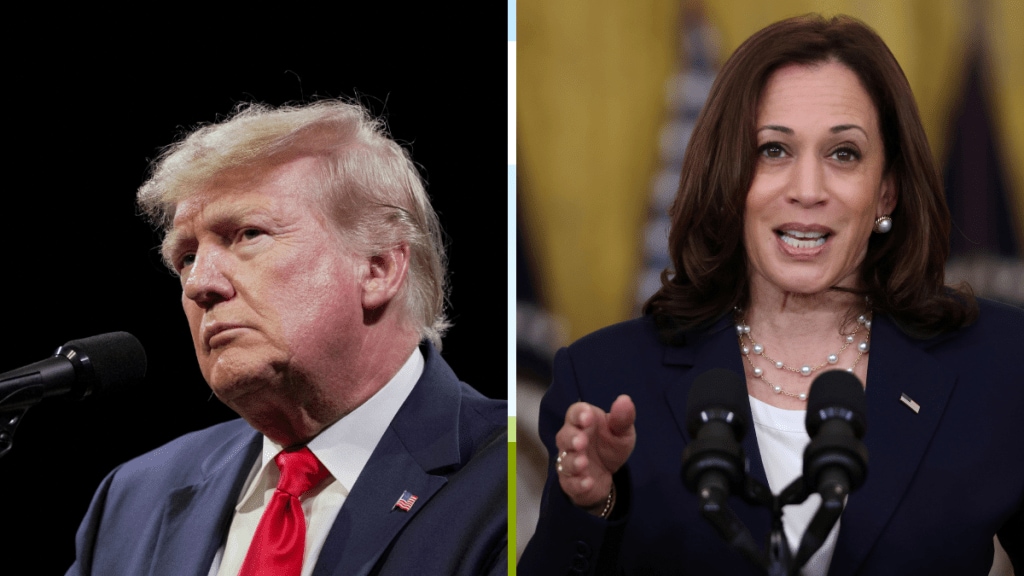With US elections 2024 grabbing all eyes as the voting is all set to begin today (November 5), and former President Donald Trump leading the predictions, Emkay Global believes that there is more steam to the volatility and Trump trade. With the election still being a binary event, it is important to understand what this could portend for economic policy ahead and potential impact on asset classes.
Madhavi Arora, Chief Economist, Emkay Global, said, “While a Trump presidency will be more noisy and volatile, we assess that a Harris presidency will not differ too widely in certain key areas. Medium term — watch out for structurally higher volatility in global inflation and growth ahead, implying the conventional playbook of ‘buy the dip’ or ‘time rallies’, during the sustained equity bull markets of the ‘Great Moderation’, need a re-watch.”
“Rising term premium will likely be the next driver of higher yields, whereas FX wars would be the biggest asset class risk that could unfold over the coming years. For India, FX and rates will be the first casualty with equities only temporarily rejoicing the Red sweep. There will be natural weakening bias for INR, led by CNY, while mild bear flattening may make a comeback,” she added.
As the election heads into its final days, the focus now is on swing states, the battleground states which are the major deciders of the presidential election.
Markets in favour of Trump?
US markets have repriced in former President Trump’s favour in recent weeks, alongside some notable shifts in swing state polling. Senate polls also have narrowed in favour of Republicans implying higher odds of a Republican sweep. Consequently, Emkay Global said, global investors are starting to position and/or hedge election risk with ‘Trump trade’ leading to: i) higher UST yields (and DM/EM yields) and, in particular, a higher-medium term Fed terminal rate, ii) stronger dollar as an offset to tariffs, iii) outperformance of US vs non-US (DM) equities, iv) tighter US credit spreads as tax cuts make it even easier for corporates to service their debt, etc.
That said, since elections being a binary event and one cannot rule out more volatility for asset classes ahead, it is pertinent to understand potential US policy shifts in key economic areas, including fiscal, trade, immigration, and regulatory policy — to assess the near- and medium-term macro and global market implications post-elections.
Trump vs Harris
Per Emkay Global, trade and fiscal policy are the two key areas where differences in approach of Donald Trump and Kamala Harris could be the sharpest.
(i) Fiscal: While the report stated that fiscal restraint may not be exercised by either, fiscal thrust from the Republican would come predominantly in the form of tax cuts, whereas Democrats would lead with more spending. Trump has argued for full extension of the 2017 tax cuts expiring in end-2025, with spending focused on infra, tech, and defense. Meanwhile, Democrats oppose extending these lower marginal rates (implying corporate taxes back to 28 per cent) and increasing the tax burden on the wealthy to fund the extension of health insurance subsidies and child tax credits. Broad extension of tax cuts was estimated to increase the cumulative deficit by $4.6 trillion over a decade, with Trump-led policies being more extravagant at over $7.5 trillion, sans any taxes/tariff hikes. “A full Trump sweep would likely be the most equity-positive outcome with a favorable corporate tax regime alongside low regulatory burden, while any gridlock is technically equity market-negative. However, the gridlock would be the most bearish outcome for spending, implying good news for bonds. Expect bearish steepening on full sweep, with higher pressure on term premium in a Red sweep. However, ‘fiscal cliff’ chances on debt ceiling or government funding also increase with Harris-led split Congress,” said Madhavi Arora.
(ii) Trade: If Trump comes to power, trade is likely to take a front seat even as both regimes would remain firm on China levies and protect sensitive industries such as solar and semis. Former President Trump has floated a variety of proposals, including a 60 per cent tariff on all Chinese imports, 100 per cent tariffs on EV imports from Mexico, and a universal 10 per cent tariff on all imports. Broad tariffs, Emkay Global stated, imply downside risks to US/global growth, higher cost, and push firms to account for greater risk of frictions for supply chains and end-market access among other factors. “We think the US election premium is not yet fully baked into the USD, and the bulk of the rebound owes to a re-pricing higher of UST yields. While Trump has vocally supported a weaker USD, we think his policies would lead to stronger USD in the near-term (also helped by higher fiscal-led US growth vs DM peers) amid USD’s anti cyclical character,” said Madhavi Arora. She further added that a Democratic victory should, however, see temporary USD weakening.
Regardless of the election outcome, the brokerage firm expects heightened FX volatility and disrupted supply chains. “We will watch for CNY-led Asian EM FX weakness, and INR following suit, even as it may stay in the middle of the EMFX pack. We fear FX wars would be the biggest asset class risk that could unfold over the coming years, as China strives to survive its new export model of high-end manufacturing, amid growing Western resistance,” Emkay Global concluded.
